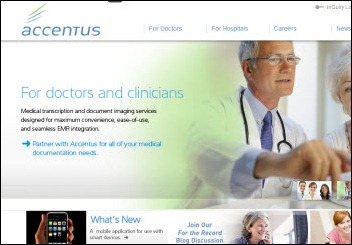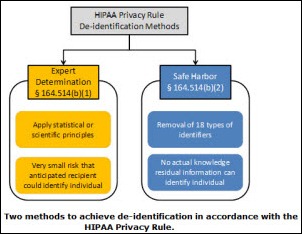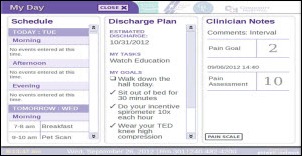News 12/5/12
Top News

The Atlanta newspaper covers the case of an internist whose stolen identity was used to apply for a National Provider Identification number, then used to incorporate a fictitious Buckhead medical clinic using a UPS Store mail box as an address with “Olga Teplukhina” named as the clinic’s CEO. The paper then did its own investigation, finding 131 CMS-registered medical providers that used an Atlanta UPS Store as their practice location, resulting in OIG looking into at least two dozen of them. One UPS Store-based company was found to have billed Medicare for $1.2 million in fraudulent injections, but is still in business because companies that are barred from billing Medicare can still bill private insurance. Despite the fact that the newspaper created the list of 131 practices using minimal effort and desktop software, CMS says it doesn’t have the technology to recognize private mailboxes since they carry a regular street address. The article says CMS pays claims that it really should deny under existing regulations because it worries that legitimate provider mistakes would unduly delay payments. One doctor complained to CMS that his name was being used to bill Medicare fraudulently, but two years later, the phony provider still has an active NPI that uses the doctor’s name.
Reader Comments
From Diminutive Avian: “Re: Epic. Most people don’t know that Epic has one final implementation check. Judy has to personally give the go-ahead. If she doesn’t like what she sees, she tells the customer she’s pulling out and gives them their money back. That’s another reason why the company has only successful implementations. Unlike publicly traded vendors, Epic is more than willing to walk away if the client is botching the install and ignoring Epic’s recommendations.” I’ve been told that at least two big academic medical centers are in precisely this predicament as we speak. From what I’ve heard, Judy gives the client two choices: (a) agree to let Epic send in a SWAT team to take over the project, or (b) find themselves another vendor.
From BubbaLove: “Re: Duke University. Heard they’re being sued by Deloitte for breach of contract due to mismanagement of the Epic implementation.” Unverified. Perhaps HITEsq or another attorney reader can scour the legal databases and report back. UPDATE: two well-placed sources and one even better second-hand source contacted me to say there’s no truth to this rumor. I’ve also had no volunteers tell me they’ve turned up any legal documents. I’m concluding that the reader’s report report, which they admitted was second hand, is inaccurate –the Duke and Deloitte working relationship hasn’t changed as the project continues.
From Current Epic Employee: “Re: Epic’s employee ages. In the November staff meeting it was announced that Epic’s #2 Carl Dvorak has worked for Epic for 25 years. He showed a slide saying that 42 percent of the current employees weren’t born then — i.e. are under 25 — and 78 percent are under 31.” People get nervous at the idea of fresh graduates telling major medical centers how to run their business, but it seems to work and it’s brilliant on Epic’s part. You take new graduates whose career prospects are negligible, plant them in Wisconsin where there aren’t many other jobs, and pay them more than they would make otherwise but less than everybody else pays their more senior HIT people. You train them in skills with minimal value elsewhere, like MUMPS programming, and give them job perks that make them feel like they’re working for Google. The young folks don’t complain much, they don’t bring in all the bad habits they learned working for less successful vendors, and by following the formula they almost always get the job done. That makes Epic almost infinitely scalable unless Midwestern universities stop graduating liberal arts majors with high GPAs. Nobody seems to mind except the experienced people who Epic won’t hire.
From UKnowMe: “Re: IBM. Seems like several high-ranking healthcare people are getting very connected on LinkedIn lately. A sign of change to come?” I don’t know, but I think your observation has business merit for LinkedIn. They could sell the names of companies that have a large percentage of current employees updating their profiles (preparing to bail) or companies newly added to a lot of profiles (on a hiring binge).
From HC IT Advisor: “Re: AeroScout, recently acquired by Stanley Black and Decker. Has issued a cease and desist order to Centrak and will be filing a patent infringement suit. Apparently Centrak is using the patented CCA capability in their new WiFi tags.” Unverified. Calling HITEsq again, either that or I need to sign up for one of the lawsuit databases like PACER so I can look these up myself.
Acquisitions, Funding, Business, and Stock
Health analytics and research company Decision Resources Group acquires the UK-based Abacus, a health economics consulting firm.
Talent management software provider HealthcareSource acquires NetLearning, which makes learning management software for the healthcare industry.
Nuance acquires Accentus, an Ontario-based transcription, documenting imaging, and remote coding technology vendor.
An article in the San Antonio newspaper questions whether Gene Powell, chairman of the University of Texas Board of Regents and co-founder of AirStrip Technologies, should have disclosed that Vanguard Health Systems, which the board chose to launch a new $350 million children’s hospital in San Antonio, had a pending business deal with AirStrip at the time. Powell did not vote on the issue, did not recommend Vanguard, and was not legally required to make any disclosure since he owns no Vanguard stock and is not a Vanguard employee, so perhaps it was a slow news day.
The former Big Five accounting firm Arthur Andersen, driven out of business in 2002 for its role as Enron’s auditor, is ordered to pay an additional and final $9.5 million for its similar auditing involvement in the 1999 merger of McKesson and HBOC. Andersen agreed to pay $73 million to settle McKesson HBOC-related class action claims in 2006, with the possibility of contingent payment claims.
Sales
Children’s Hospital of Central California will implement athenaClinicals, athenaCollector, and athenaCommunicator across its 127-provider system.
Marietta Memorial Hospital (OH) extends its IT services contract with CareTech Solutions for an additional three years.
Twenty-one VA medical centers will implement GetWellNetwork’s interactive patient care solution, including the new Interactive Patient Whiteboard.
Memorial Health System (IL) purchases the Omni-Patient enterprise master data application and the WebFOCUS BI platform from Information Builders.
MemorialCare Health System (CA) renews and expands its relationship with MedAssets to include GPO services for supplies and purchased services and MedAssets Capital and Construction solutions.
Huntsman Cancer Institute at the University of Utah selects Wolters Kluwer Health’s ProVation MultiCaregiver EHR.
Contract resource organization NCGS selects Merge’s eClinical OS and clinical trial management solution.
Consulting firm AmpliPHY will provide Wellcentive’s data analytics platform to primary care practices.
Managed care company Amerigroup Corporation chooses McKesson Clear Coverage for point-of-care utilization management, coverage determination, and network compliance.
Michigan Health Information Network Shared Services signs with HIPAAT International for technology that allows patients to control the sharing of their PHI and allow them to view an audit log of who has viewed it.
People
Qualis Health hires David Chamberlain (Cardiac Science and Criticare Systems) as CIO.
Saint Francis Hospital and Medical Center (CT) names Sudeep Bansal, MD as the organization’s first CMIO.
Todd Johnson, former president and CEO of Salar and SVP of Transcend Services/Nuance after Salar’s acquisition, is named CEO of HealthLoop.
Michael Waldrum, whose roles at the UAB Health System included a five-year stint as CIO through 2004, is named CEO of University of Arizona Health Network.
Charlie Baxter, AVP of Iatric Systems and former Army captain, died Friday at 48. The guest book is here.
Announcements and Implementations
Allscripts EHR customer Primary Physician Partners (CO) becomes the first practice to connects to the CORHIO.
The Indiana HIE says that more than 750 physicians and 174 practice sites have agreed to publicly post their clinical quality measure scores on the Quality Health First Program’s public reporting website.
Imprivata announces that more than 250 healthcare organizations enrolled in its Cortext HIPAA-compliant, pager-replacing text messaging solution its first 60 days of release. Pricing ranges from free (unlimited users, unlimited messaging, unlimited photo messages, standard support, 30 days’ archiving) to $5 per user per month (upgraded support and archiving).
Elsevier integrates its ExitCare library of discharge instructions and patient education with Meditech’s EHR.
ICSA Labs and IHE USA unveil a certification program to test and certify the security and interoperability of HIT, with three tiers of certification: conformance to IHE profiles, demonstrated interoperability among disparate systems, and validated implementations of deployed certified technologies. Participants in January’s 2013 NA Connectathon in Chicago can register for testing at the event.
Montrue Technologies releases a free version of its Sparrow EDIS iPad-based emergency department information system. I interviewed Co-Founder and CEO Brian Phelps, MD earlier this year.
Government and Politics
Recovery auditors collected $2.2 billion in overpayments in fiscal year 2012 and gave providers $109 million in underpayments. Net 2012 corrections were $2.4 billion, compared to 2011’s $939 million.
Congressman Mike Honda (D-CA) introduces the Healthcare Innovation and Marketplace Technologies Act to foster more healthcare innovation through the development of marketplace incentives, challenge grants, and increased workforce retraining. The bill would also establish an Office of Wireless Health at the FDA.
Innovation and Research
A Microsoft Research documentary shows the organization’s work in using technology to fight tuberculosis in India, including development of a biometric monitoring system to make sure patients keep their healthcare appointments and systems that trigger an SMS message to a manager when a patient misses scheduled medication doses. Treatment is effective and straightforward, but requires more than 40 clinic visits in six months. Non-compliance causes TB spread, drug resistance, and nearly 1,000 deaths per day in India.
UCLA engineering school researchers create BigFoot, a software package that allows people with chronic foot problems to track their conditions using a PC and flatbed scanner.
Other
Streamline Health, which acquired Atlanta-based Interpoint Partners a year ago, will move its corporate headquarters from Cincinnati to Atlanta. The company will continue to operate the Cincinnati and New York City offices.
Cerner analyst Staci Klinginsmith is crowned Miss Kansas USA.
University of Virginia Medical Center warns patients that a mobile device used by on-call IV pharmacists in its home health agency is missing and contains patient information, including diagnoses, medications, and Social Security numbers used as health insurance ID numbers.
HIMSS, responding to OIG’s recommendation that the bar for Meaningful Use payments should be raised via pre-payment reviews, improved EHR MU reporting, and improved EHR reporting certification, supports CMS developing guidelines that will help providers prepare and retain audit-related documentation. In other words, like CMS, HIMSS isn’t a fan of pre-payment reviews.
I’ve spent a considerable amount of money and energy on programming workarounds required to make HIStalk work on the incredibly buggy and standards-breaking Internet Explorer, but I’ve noticed its gradual improvement. I’m encouraged that Microsoft gets the lack of browser love it receives and can even poke fun at itself with a fun “it sucks less” video (above) and a new site, www.browseryoulovetohate.com. I’m checking it out in Firefox, of course, since I’m not that forgiving of IE’s past transgressions, but I may download the IE10 beta just to see what all the fuss is about.
A new JAMA article finds that the average dentist now out-earns the average physician, with pharmacists not too far behind.
Lyle Berkowitz, MD (Northwestern University) and Chris McCarthy, MPH, MBA (Kaiser Permanente Innovation Consultancy) are editors of the newly published Innovation with Information Technologies in Healthcare. DrLyle says it tells the stories of 20 organizations who are HIT innovators in improving care quality and value, with details that he describes as “a big cookbook of recipes on how to innovate with HIT” divided into sections covering electronic medical records, telehealth, and advanced technology. I took a quick skim over a couple of the sample chapters he sent over and it’s meaty, without the usual fluff that makes some HIT books seem like a handful of good ideas and thoughts that were shamelessly padded to justify an author credit and a higher selling price. The book is $74.14 on Amazon and you can use the Look Inside! option to try before you buy.
A Colorado Public Radio article covers EMR adoption, showcasing a five-physician practice that expected its new EMR to increase patient capacity by 25% and get its bills out more quickly. That turned out to be wishful thinking on the salesperson’s part. They never got back up to more than 80 percent of their pre-EMR workload, they found that their Medicare patient volume was too low to qualify for incentive payments, one doctor quit over frustration with the EMR, and the remaining four partners were on the hook for the $200,000 they had borrowed to buy it. The end result: they had to sell their practice.
Use of mobile technology to view patient information and to access non-protected health information is on the rise, according to a HIMSS mobile technology survey. Key uses include collection of data at the bedside, bar code reading, monitoring data from medical devices, and capturing visual representation of patient data. Funding and security concerns are the top barriers to mobile technology adoption.
Athenahealth’s Jonathan Bush channels Dr. Mostashari on Fox Business wearing a holiday-red bowtie and pitching healthcare technology.
A local paper shares the story of a clerical supervisor in a British Columbia hospital who was conducting training on the Vocera communication system when the device issued a Code Orange, warning of an impending flood. Clinical staff moved patients to safety just before a wall collapsed in a flood of water, while the supervisor scrambled to save paper charts and the hospital’s stockpile of 75 Vocera badges.
Weird News Andy is really fired up about use of the Liverpool Care Pathway for palliative care in the UK. An audit of records from 178 NHS hospitals finds that nearly half of the dying patients who had life-saving treatment (drugs, fluids, food) withdrawn via the protocol weren’t told that fact, 22 percent had no documented evidence that their care and comfort was maintained, and a third of the families didn’t receive literature explaining the process. A proposal is on the table to require consulting with the patient or family before initiating the pathway, which leads to patient death in an average of 29 hours.
WNA could contribute only a “sheesh” to this article, which finds that Dallas mothers and daughters are bonding over cosmetic surgery procedures, often motivated by reality TV shows that make that practice seem normal.
A former Microsoft manager takes advantage of newly legalized marijuana in Washington by opening a “premium marijuana” retail business, expressing his desire to position his brand of weed like fine brandy or cigars to high-income baby boomers. He says, “Think of us as the Neiman Marcus of marijuana … the buzz is in the air.” He says he came up with the plan while high and will name the business after his marijuana-farming great-grandfather.
In Brazil, an apparently computer-savvy thief robs an ATM by replacing its USB security camera with a Plug and Play keyboard and a USB stick, then restarts the machine and keys commands to withdraw all its cash. He was caught. The article mentions the recent discovery of several ATMs at Inova Fairfax Hospital (VA) that were rigged with “ATM skimmers” that fit over the card slot, capturing the card’s number and in some cases using video recording to capture the user’s PIN.
Sponsor Updates
- Aspen Advisors hosted 62 associates at its annual retreat in Fort Lauderdale, which included a run fun that raised $1,000 for the University of Miami Health System.
- Besler Consulting representatives will present at upcoming New Jersey and Metropolitan Philadelphia HFMA seminars.
- Santa Rosa Consulting announces E2E Activation Support, a service line that will provide elbow-to-elbow EMR go-live support.
- The Black Book Rankings names DrFirst the top vendor for e-prescribing and recognizes Emdeon for outstanding developments in clinical exchange solutions. Other HIStalk sponsors earning honors include Allscripts, e-MDs, Vitera, Aprima, SRS, Quest MedPlus Care 360, and McKesson.
- A local paper profiles eClinicalWorks CEO Girish Kumar Navani and the success of his company.
- AT&T names its top five healthcare trends for 2013, which emphasize growth in mobile apps and telehealth.
- Sacred Heart Health Systems (FL/AL) shares how Iatric Systems’ Security Audit Manager has aided privacy compliance by capturing audit log data from its Siemens, McKesson, and Picis systems.
- Three Informatica customers win Ventana Research Leadership Awards, including HMS Holdings (IT Leadership Award for Analytics and Overall IT Leader); Moffitt Cancer Center (Business Technology Award for Big Data); and Ochsner Health System (IT Leadership Award for Information Management.) Informatica’s PowerCenter Big Data Edition also won the Ventana Research Technology Innovation Award.
- Mark Van Kooy, Myra Aubuchon, and Dawn Mitchell of Aspen Advisors present a December 5 Webinar on addressing EMR value with a hospital board.
- 3M Health Information Systems offers a Webcast featuring 3M CMIO Sandeep Wadhwa’s presentation on improving ACO efficiency and outcomes.
- Cumberland Consulting promotes Charles Taylor to principal and Jose Gonzalez to executive consultant.
- The Advisory Board Company’s Southwind program recognizes Dignity Health (CA), Adirondack Region Medical Home Pilot (NY), and Lancaster General Health (PA) for successful physician partnerships.
- Covisint releases a white paper that outlines the evolution, growth, and future of HIEs.
- Beacon Partners employees assemble 108 care packages for troops during the company’s annual meeting.
- Wellcentive’s VP of Product Strategy Mason Beard discusses interface strategies for population health management in a blog post.
Contacts
Mr. H, Inga, Dr. Jayne, Dr. Gregg.
More news: HIStalk Practice, HIStalk Connect.



































































































Merry Christmas and a Happy New Year to the HIStalk crowd. I wish you the joys of the season!